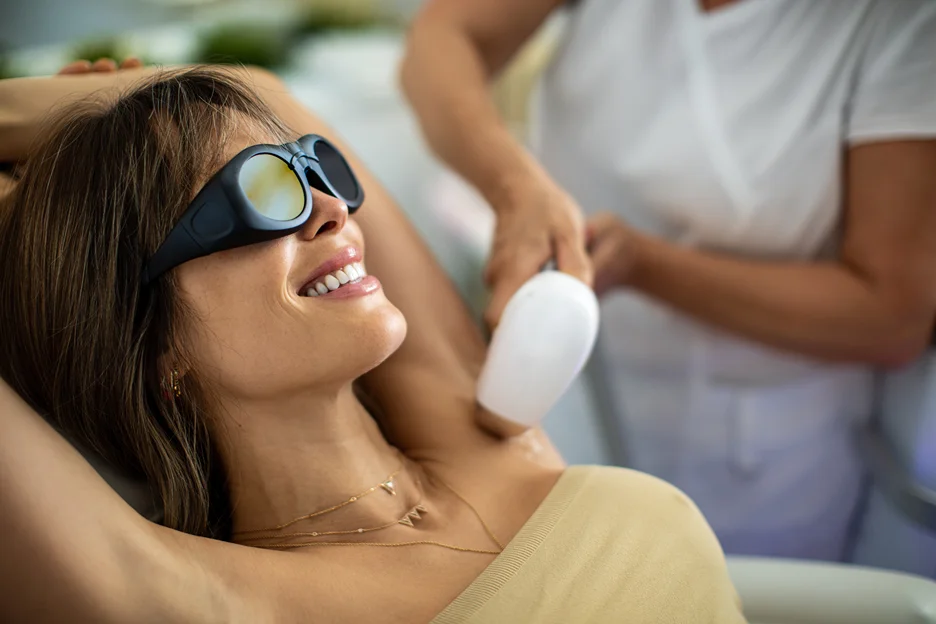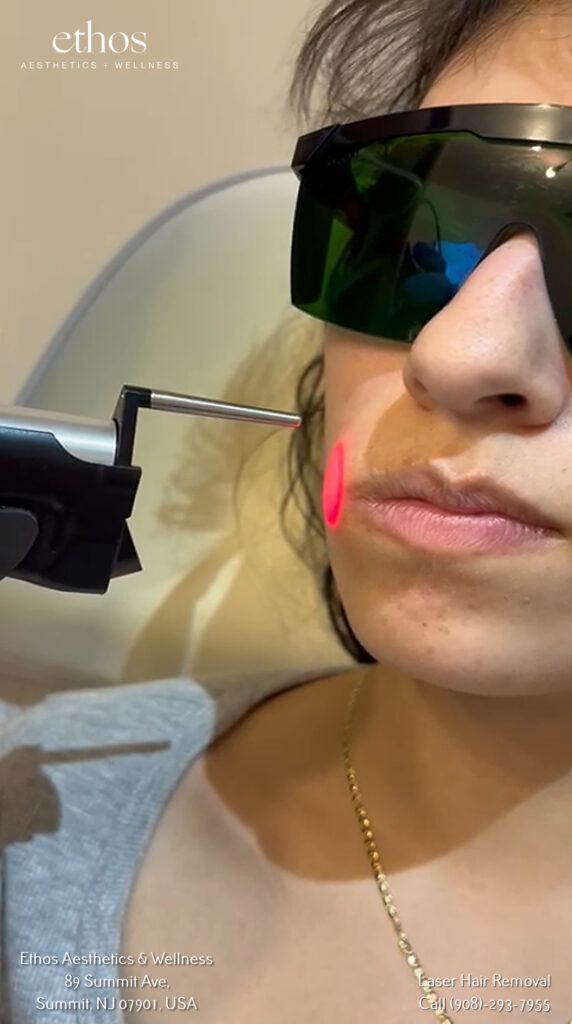Laser hair removal is a popular choice for those seeking lasting results in managing unwanted hair. It works by directing laser energy at hair follicles, reducing their ability to grow hair over time.
But the process doesn’t stop at the last laser beep. Proper post-treatment care, especially when it comes to shaving, is key to getting the best results. It’s not just about what happens during the treatment, but also what you do after.
Shaving After Laser Hair Removal: How Soon Is Too Soon?
Most professionals suggest a cautious wait of about two weeks prior to picking up that razor. But hair growth cycles differ from one person to another. It’s always a smart move to consult with your technician for tailored advice.
The Mechanics Behind the Laser Hair Treatment
Laser hair removal isn’t just about removing unwanted hair. It’s a strategic process that targets the hair follicle using concentrated light beams. This action disrupts the hair’s natural growth cycle, ensuring treated hairs eventually shed and don’t grow back.
After undergoing the treatment, hairs begin a shedding phase which can last between 10 to 14 days. It’s crucial during this period to let the hairs naturally fall out. Shaving too early can risk complications like ingrown hairs and other skin irritations.
What Are the Risks of Shaving Too Soon After Laser Hair Removal?

Why exactly do clinics advise waiting a few weeks before shaving after laser hair removal? What happens if you just can’t wait and decide to shave after a few days? While the temptation to shave early is understandable, it does come with some potential risks and side effects.
Shaving too soon after laser hair removal treatment can:
| Potential Issues | Explanation |
| Ingrown Hairs | Shaving can cause hairs to curl back into the skin, especially if done during the shedding phase, leading to inflamed and unsightly ingrown hairs. |
| Razor Burn | Shaving removes the outer layer of skin cells. After laser treatment, this can result in heightened skin irritation, manifesting as rashes or raw areas. |
| Enhanced Skin Sensitivity | The skin is already in a delicate state post-laser. Shaving can exacerbate sensitivity, causing discomfort like itching and stinging. |
| Risk of Bleeding and Scabbing | Shaving hairs that are in the process of shedding might cause them to bleed, followed by the formation of scabs. |
| Bacterial Infections | Open areas from shaving can become entry points for bacteria, increasing the chances of infections such as folliculitis. |
| Disruption of Hair Shedding | Rather than allowing hairs to naturally shed, shaving can force them back into the skin, compromising the effectiveness of the laser treatment. |
Impatience has consequences when it comes to post-laser shaving! The two weeks of waiting may feel tedious, but it’s far better than dealing with razor burn, ingrowns, and damage to your investment. Wait for total hair shedding before taking a razor to your skin.
What Steps Should I Take Before Shaving After Laser Hair Removal?
You’ve been patient, the two weeks have passed, and your technician has given you the green light to shave—congratulations! Here are some tips to prep your skin and make post-laser shaving go smoothly:
- Exfoliate first: Use a gentle scrub or dry brushing to remove any dead skin cells and loosen hairs that are ready to shed. This helps hairs exit instead of turning inward.
- Soften your skin: Take a warm shower or use a warm, wet washcloth to hydrate and soften your skin before shaving. You can also apply a moisturizing shaving cream or oil.
- Use a fresh blade: Make sure your razor is sharp and high-quality for a close, smooth shave. Dull blades tug at the skin and lead to irritation.
- Trim long hairs first: For areas with longer hair growth, use trimmers or scissors to trim down before shaving. This prevents clogging the razor.
- Go slowly: Shave in smooth, gentle strokes in the direction of hair growth. Don’t press too hard or rush through. Rinse the blade frequently to prevent clogging.
The goal is to shave the area as gently as possible. This removes hairs without taxing your skin. Take it slow and steady for the most comfortable, irritation-free shave.
Laser Hair Removal: Aftercare Tips for Optimal Results
Now that you know when and how to shave after laser hair removal, here are some other aftercare tips for protecting your investment:
Skincare Essentials
- Sun and UV Protection: Minimize sun exposure on treated areas. If you need to be outdoors, apply sunscreen with at least SPF 30. Even on overcast days, UV rays can cause hyperpigmentation on sensitized skin.
- Gentle Skincare: Avoid products with potential irritants like alcohol, retinol, or acids. Opt for gentle cleansers and steer clear of harsh scrubs. If your skin feels irritated, soothe it with creams containing aloe vera or hydrocortisone.
- Stay Hydrated and Nourished: Drinking ample water and maintaining a balanced diet promotes faster skin healing. Well-hydrated skin recovers more efficiently.
Lifestyle Adjustments
- Keep Cool and Dry: Refrain from activities causing excessive sweating or heat. This includes avoiding saunas, hot tubs, and strenuous exercises. Overheating can irritate the treated skin.
- Wardrobe Choices: Opt for loose and breathable clothing. This ensures minimal friction and heat retention in the treated areas, facilitating recovery.
- Avoid Picking: It’s tempting, but picking at dry spots or scabs can result in scarring or infections. If you notice flaky skin, gently exfoliate.
Additional Considerations
- Adhere to Clinic Recommendations: Your laser clinic will provide a detailed aftercare guide. It’s crucial to follow this guide as it offers tailored advice based on the specific treatment you received.
- Pain and Discomfort: If you experience any swelling or sensitivity, consider over-the-counter pain medications. However, always take them as directed.
- Regular Sessions: Stick to your prescribed treatment schedule. Consistent sessions prevent hair regrowth and ensure you achieve the desired results.
With a little patience and proper aftercare, your treated skin will quickly get back to normal—minus the unwanted hair! As you undergo additional laser sessions, shaving will become even simpler. Just be sure to communicate with your technician so you know the best time to shave or trim between appointments.
FAQs: Post-Laser Hair Removal Shaving
How soon can I shave after a laser hair removal session?
After undergoing a laser hair removal treatment, it’s generally advised to wait at least one to two weeks before shaving. This gives the treated hair follicles time to shed and reduces the risk of skin irritation.
Why is there a waiting period before shaving post-laser treatment?
The laser treatment targets the hair follicle, disrupting the hair growth cycle. Post-treatment, hairs begin a shedding phase, which lasts about 10-14 days. Shaving before this shedding completes can increase the chance of ingrown hairs and other side effects.
What if I notice significant hair regrowth before the two-week mark?
Just be patient! The hair regrowth you’re observing could be from hair follicles that were in a dormant phase during your laser session. It’s best to consult with your laser hair removal specialist before taking any action.
Are there any other aftercare instructions I should follow post-treatment?
Absolutely! Aside from shaving guidelines, you should avoid direct sunlight, apply soothing creams to minimize temporary redness, avoid swimming pools or activities causing excessive sweating, and always follow the specific aftercare instructions provided by your clinic.
Can I use other hair removal methods if I can’t shave immediately after laser treatment?
While waiting to shave, avoid waxing or plucking as these methods target the hair root, similar to the laser. However, you can trim your hair if needed. Always communicate with your provider for personalized advice.
Smooth, Radiant, and Hair-Free – It All Starts at Ethos Spa

If you’re tired of constant shaving, waxing, and plucking, laser hair removal may be right for you. This innovative technology offers long-lasting hair reduction for nearly all skin types and tones when performed properly. Although a bit of temporary discomfort is normal immediately after treatment, the laser is considered very low risk with minimal downtime.
At Ethos Spa, our team of experts specializes in laser hair removal using state-of-the-art lasers. We create customized plans focused on your body and hair type for optimal, lasting results. Clients love our spa-like atmosphere and dedication to patient comfort from start to finish.
Schedule a consultation at Ethos Spa today to learn more about laser hair removal. Together we’ll design an effective hair removal plan to have you stubble-free in no time. Our team is happy to answer all your questions—including when it will be safe to shave again after treatment. Contact us to get started on unveiling your naturally smooth, beautiful skin.







